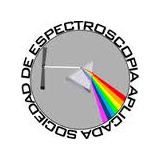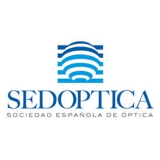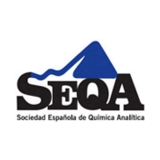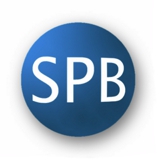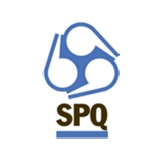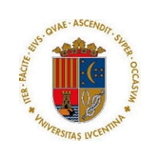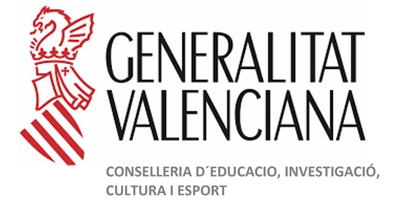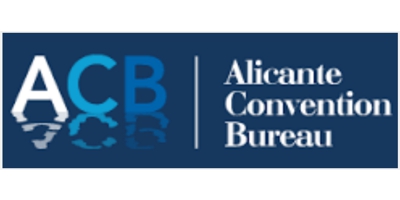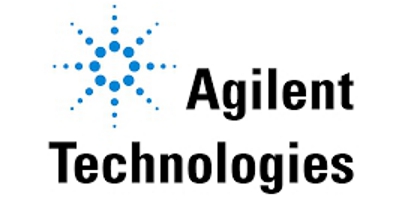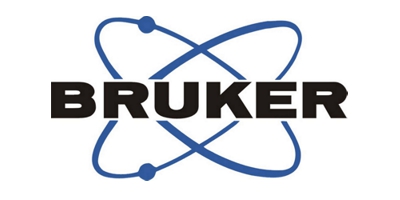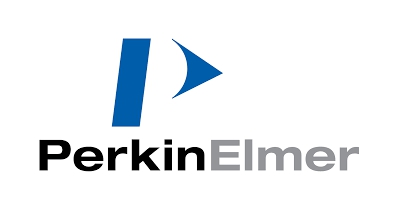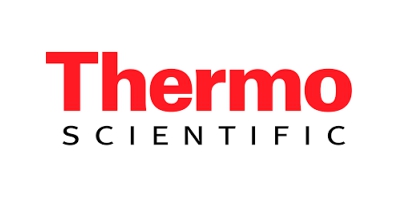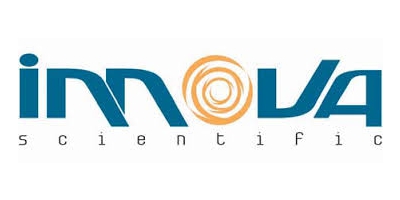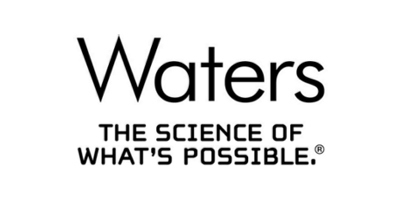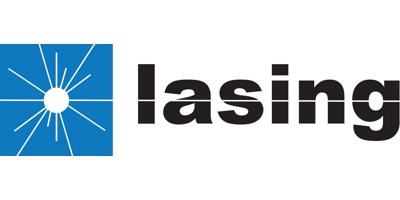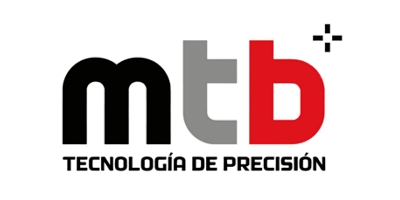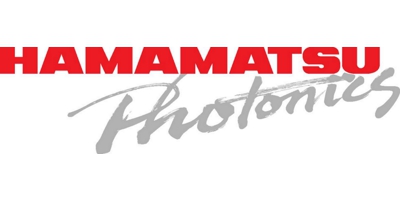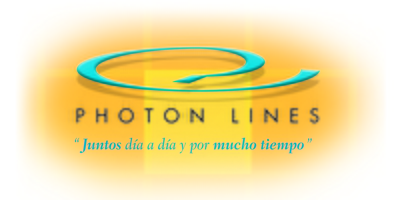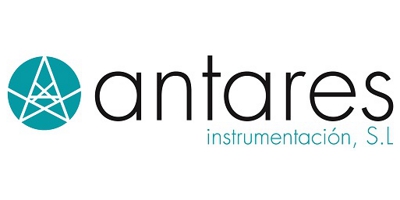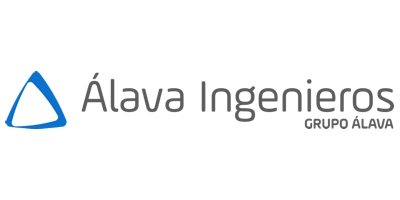Conferenciantes Plenarios
Dermot Diamond
Dublin City University, Irlanda.
Biomimetic Fluidics based on Stimuli-Responsive Materials - The Key to Realising Chem/Bio-sensors with Revolutionary Performance
Biography:
Dermot Diamond received his Ph.D. and D.Sc. from Queenâs University Belfast (Chemical Sensors, 1987, Internet Scale Sensing, 2002), and was Vice-President for Research at Dublin City University (2002-2004). He has published over 300 peer-reviewed papers in international journals, is a named inventor in 19 patents, and is co-author and editor of five books. He was director (2007-2015) and founding member of the National Centre for Sensor Research (www.ncsr.ie) at Dublin City University, and an SFI-funded investigator in the INSIGHT Centre (www.insight-centre.org). In 2002, he was awarded the inaugural silver medal for Sensor Research by the Royal Society of Chemistry, London, and in 2006 he received the DCU Presidentâs Award for research excellence, and in 2015 he was received the presidentâs award for innovation. In May 2014, in recognition of his academic contributions and achievements, he was admitted to Membership of the Royal Irish Academy. In April 2015 he was awarded the Boyle Higgins Gold Medal by the Institute of Chemistry of Ireland in recognition of his research achievements.
Research lines:
Prof. Diamond's research interests range across molecular recognition, materials chemistry (particularly stimuli responsive materials), electrochemical and optical chemical sensors and biosensors, lab-on-a-chip, sensor applications in environmental, clinical, food quality and process monitoring, development of fully autonomous sensing devices, wireless sensors and sensor networks. He is particularly interested in applying bio-inspired approaches to solve the fundamental barriers that have prevented the realisation of low cost chem/biosensing devices capable of long term autonomous operation. This is the key to developing scalable models through which a continuum between the digital and molecular worlds can eventually be created.
Lene Broeng Oddershede
Niels Bohr Institute, Dinamarca.
Optical manipulation and applications of HOT nanoparticles
Brief biography:
Lene B. Oddershede received the Cand Scient degree in mathematics and physics from the University of Southern Denmark (SDU) in 1995 and the PhD degree in physics from SDU in 1998. She worked as a visiting graduate student at the James Frank Institute, University of Chicago, in 1996â1997. In 1998 she became an Assistant Professor and constructed the optical tweezers laboratory at the Niels Bohr Institute (NBI), University of Copenhagen. In 2003 she was tenured as an associate professor at the NBI and became group leader of the Optical Tweezers Group. In 2015 she became appointed as a full Professor at the NBI and simultaneously became Center leader for StemPhys, a Danish National Research Foundation Center of Excellence. Lene B. Oddershede is a member of the Danish Royal Academy of Sciences and Letters and has received several awards, for instance the Young Investigator Award from the Danish Optical Society in 2003, the CeNS publication award in 2011, a silver medal from the Royal Danish Academy of Sciences and Letters in 2011, and in 2014 the Elite Research Prize from the Danish National Research Foundations.
Research lines:
For many years Lene B. Oddershede has optically manipulated nanoparticles and investigated the interaction between metallic nanoparticles and the incident electromagnetic field. During recent years, focus has also been on the absorbance of light by the nanoparticles and on quantifying the accompanying temperature rise and utilizing it in a biological context. In addition, Lene B. Oddershede has always had a strong interest in investigating the physics of living matter from the single molecule to whole cell level and a new research direction of her lab focuses on the dynamics and evolution of stem cells.
ValentÃn GarcÃa Baonza
Universidad Complutense de Madrid, EspaÃąa.
Extreme Spectroscopy (EspectroscopÃa en condiciones extremas)
Brief biography:
Full professor of Physical Chemistry at the Complutense University of Madrid since 2008, and appointed senior scientist at IGEO (CSIC-UCM) in 2014. He is the national coordinator of the Matter at High Pressure multidisciplinary program âMALTA-Consolider Teamâ since 2007. He is a specialist in the study of matter under extreme conditions using both thermodynamic and spectroscopic methods. As an expert in spectroscopic techniques and analysis, he is involved since 2013 in ESA (ExoMars) NASA (Mars2020) space missions for instrumental development and spectroscopic interpretation. Chair of the 2015 Joint AIRAPT-25 & EHPRG-53 International Conference on High Pressure Science & Technology. Elected member of the AIRAPT Executive Committee. Former member of the EHPRG Scientific Committee. Member of the board of the RSEQ. Recipient of the 1999 EHPRG Award for young scientists. NATO Postdoctoral fellow at the Lawrence Livermore National Laboratory.
Research lines:
Development of high-pressure techniques. Study of interaction potentials, equation of state and thermodynamic stability of liquids and solids (experimental and theoretical), including models of crystal melting under extreme conditions. Development and application of spectroscopic instrumentation (Raman, IR and luminescence) for the study of phase transitions and chemical reactivity in condensed matter (carbon materials, water/ices and hydrogen-bonded systems) and solid-state physics and chemistry (structural, mechanical, electronic and optical properties). Development of computational codes and algorithms for spectroscopic interpretation and analysis.
Dario M. Bassani
Institut des Sciences MolÃĐculaires, Francia.
Spectroscopy of supramolecular species: How organisation affects electronic transitions in self-assembled molecular systems
Brief biography:
Dario Bassani obtained a Masters in Chemistry from the UniversitÃĐ Catholique de Louvain (Belgium) in 1988, followed by a PhD in Chemistry from Northwestern University (1993). He was then a Hoffman-La Roche Fellow at the Institut fÞr Physikalische Chemie (UniversitÃĪt Basle, Switzerland) and a Pierre and Marie Currie Fellow at the UniversitÃĐ Luis Pasteur (Strasbourg, France). Since 1997 Dario Bassani is a CNRS researcher at the University of Bordeaux. He is the recipient of the Inter-American Photochemical Society Young Investigator Award (2003), the French Chemical Society Physical Chemistry Division Award, (2004) and the Grammaticakis-Neumann Award from the Swiss Photochemical Society (2005). He has served on numerous committees and is currently Editor-in-Chief for Photochem. & Photobiol. Sci. and Associate Editor for Chem. Phys. Lett.
Research lines:
Our work focusses on the use of supramolecular interactions to control the photochemical and photophysical behavior of excited states in solution, in the solid, and on surfaces. To this end, we design systems that self-assemble into photoactive architectures endowed with specific functionalities, such as target-directed molecular recognition and sensing, supramolecular photocatalysis, and supramolecular materials for opto-electronic applications including ultra-high definition OLED displays and solar energy conversion. Ongoing work is also aimed at adaptive materials capable of self-healing and autonomic regulation. Intermolecular communication in supramolecular assemblies is harnessed to give systems in which the reactivity, absorption, or emission reflects the ordering of the electro- and photo-active subunits.
Conferenciantes Invitados
RamÃģn MartÃnez MaÃąez
Universitat PolitÃĻcnica de ValÃĻncia, EspaÃąa.
Chromo-fluorogenic optical probes
Brief biography:
Dr. RamÃģn MartÃnez-MÃĄÃąez is full Professor of Inorganic Chemistry at the Department of Chemistry of the Polytechnic University of Valencia (UPV) and Head of the University Institute of Molecular Recognition and Technologic Development (IDM) of Valencia, Spain. He is also Scientific Director of the Biomedical Research Center Network in Bioengineering, Biomaterials and Nanomedicine (CIBER-BBN) and Group leader of a PROMETEO project for groups of excellence in the Comunidad Valenciana. He is an active researcher in the field of supramolecular chemistry of hybrid organic-inorganic nanostructured gated materials. He has published more than 320 scientific papers in international journals and holds 16 patents. His research articles have been cited over 13000 times (h index 55). He has co-authored one scientific reference book published by Wiley in 2010 and is also co-author of 15 book chapters. He has been a visiting researcher at the University of Cambridge, UK. Recently he became Chairman of the editorial advisory board of the journal ChemistryOpen and a member of the International Advisory Board of the journals Chem.Asian.J. and Chem.Plus.Chem. published by Wiley-VCH. He is also Coordinator of the Doctorate program of Chemistry at the UPV.
Research lines:
My research interest involves two areas related with (i) the design of chemosensors and probes and (ii) the development of functional hybrid materials. The area of chemosensing deals with the design of molecular entities, which are able to modify an easy-to-detect signal upon coordination/recognition of a target guest. This has become in the last years one of the most active research areas within the field of supramolecular chemistry. I have developed work in this research field specially designing chromo-fluorogenic probes for cations, anions and neutral species of environmental and biological interest. I have also been working in the design of new signalling paradigms using advanced supramolecular concepts. In the area of functional hybrid materials I am interested in combining suitable nanoscopic solid supports and molecular/supramolecular concepts to develop hybrid systems to provide a means of bridging the gap between molecules, materials sciences and nanotechnology. I am also interested to demonstrate that functionalized hybrid materials can play an active role in recognition processes and that they can be useful for the development of new smart hybrid supports. In this filed I have developed new nanoscopic hybrid solids for sensing and designed gated materials for on-command delivery applications.
MarÃa Teresa FernÃĄndez ArgÞelles
International Iberian Nanotechnology Laboratory, Portugal.
Bioanalytical strategies based on nanoparticles
Brief biography:
Dra. Fdez-ArgÞelles was awarded in 2004 with a predoctoral scholarship from the âPlan de Ciencia y TecnologÃa del Principado de Asturiasâ. She obtained a Ph.D. in Chemistry (2008) at the University of Oviedo, recognized with a European mention, supervised by Prof. R. Pereiro and Dr. J.M. Costa-FernÃĄndez. Additionally, she was awarded with the Extraordinary Doctorate Prize of the University of Oviedo, and the Thesis Award of the Spanish Applied Spectroscopy Society.
She achieved specialization in diverse fields of Nanoscience and Bioanalytical Chemistry during her PhD and through different stays in leading international research groups. Particularly, she worked at the Research Spectrometry Group headed by Prof. Sanz-Medel, and at the Integrated Nanotechnology & Biomedical Sciences Laboratory at the University of Toronto, Canada, headed by Prof. Chan in 2005. In addition, she also did a research stay at the Center for Nanoscience at the Ludwig Maximilians Universitaat (Germany, 2006), working under the supervision of Prof. Parak on the synthesis of FRET-based probes using QDs. Moreover, she worked on the monofunctionalization of NPs at the Faculty of Sciences at the University of East Anglia (United Kingdom, 2009), in the group of Prof. Nann as postdoctoral researcher.
She was âProfesor Ayudanteâ and âProfesor Ayudante Doctorâ (2007-2013, University of Oviedo), teaching more than 1000 hours of lectures in different degrees and in an international double-diploma master. After evaluation of her research and teaching experience by the ANECA, she holds the âProfesor Titularâ accreditation (2011). In 2013 she joined again the Integrated Nanotechnology & Biomedical Sciences Laboratory at the University of Toronto as postdoctoral researcher to work on the development of point-of-care strategies for pathogen detection using nanoparticles. Since 2014 she is Junior Group Leader at the International Iberian Nanotechnology Laboratory, located in Braga, Portugal, working on the development of bioanalytical strategies based on the use of nanoparticles.
Research lines:
Her current research interests are focused on the combination of nanotechnology with amplification DNA-based schemes for bioanalytical purposes, which constitutes a novel research line worldwide and the basis of the proposed project. She initiated her experience on this topic at the Integrated Nanotechnology & Biomedical Sciences Laboratory (University of Toronto, 2013) through an Excellence Mobility Research Grant, working on the coupling of gold NPs to Nucleic Acid Enzymes for the detection of bacteria. Moreover, she is also working on the development of bioanalytical tools using different types of NPs at the International Iberian Nanotechnology Laboratory (Portugal) for the detection of pathogens, food adulteration, contaminants in water, etc.
Elena Moreno Atahonero
Centro de AstrobiologÃa-INTA-CSIC, EspaÃąa.
UV irradiation of H2O:CO:NH3 ice analog mixtures
Brief biography:
July 2015 - Present: Postdoctoral research in the department of Astrophysics in the INTA. Research on the ice mantles formed on top of dust grains in cold and dense molecular clouds are photoprocessed by UV-irradiation experiments. Other experimental techniques used are the quadrupole mass spectrometer (QMS) on the gas phase and Fourier transform infrared spectrometer (FTIR) on the solid phase. Research Group of Dr. Guillermo MuÃąoz Caro. September 2012 to April 2015: Postdoctoral research in the department of the Molecular Physic in the Institute of the Structure of Matter of the CSIC institution. Fields of study are Raman Spectroscopy in supersonic gas jets, rotational energy transfer coefficients by molecular collisions and molecular solidification in cryogenic liquid microâjets. Research Group of Prof. Salvador Montero and Dr. JosÃĐ MarÃa FernÃĄndez.
April 2011 - August 2012: Research Assistant at the University of Castilla-La Mancha. Research Group of Dr.D. Alfonso Aranda. UCLM , Ciudad Real (Spain).
June 2009 - October 2009: Predoctoral Stay at the European University Center for Materials, Surfaces and Processes for Catalysis (LMSPC-UMR 7515) in Strasbourg, France. Supervisors: Dr. StÃĐphane Le Calve.
January 2008 - February 2008: Predoctoral Stay at CNRS Orleans, France. Dr. Georges Le Bras Laboratory. CNRS Orleans. France. Supervisors: Dra. Nadia BUTKOVSKAYA.
September 2006 - January 2007: Introduction to Research Fellow in the Physical-Chemistry Group of Dr. D. Alfonso Aranda Rubio. UCLM, Ciudad Real (Spain).
2007 - 2011: Ph.D in the Department of PhysicalsâChemistry. Faculty of Chemistry. University of CastillaâLa Mancha (UCLM). Ciudad Real. Spain.
2006 - 2008: Advanced Studies Diploma (to acquire research capacity).UCLM. Doctoral program of "Lasers and Advanced Spectroscopy in Chemistry". Ciudad Real. Spain.
2008 - 2009: Master in Occupational Risks Prevention: (specializing in) industrial hygiene, ergonomics and risk prevention. And course Quality and Environmental Management. From private academic, Ciudad Real. Spain.
2001 - 2006: Chemistry Graduate of UCLM, Ciudad Real. Spain. The prize that acknowledges the best student record of the year (2006) by CCM, Spain.
Research lines:
ASTROPHYICS. The specific tasks Laboratory simulations of ice processes under interstellar conditions: photo- and thermal desorption, organic products of ice irradiation by UV, X-ray and ion processing. The in situ analysis of ice is performed by FTIR spectroscopy.
MOLECULAR FLUID DINAMICS. Study of Supersonic Jets by Raman Spectroscopy, average range coefficients for rotational inelastic collisions, molecular aggregation and homogeneous condensation and Raman instrumentation.
QUEMISTRY OF ATMOSPHERIC PROCESSES. Reactivity of pollutants by simulating atmospheric processes in heterogeneous conditions, measures of pollutants in natural areas of Castilla-La Mancha, study of atmospheric reactions.
Pedro D. Vaz
Universidade de Lisboa, Portugal.
Looking inside catalysts through neutrons
Brief biography:
Pedro Vaz was born in Lisbon, Portugal. He has been a member of research teams in several projects funded by the FCT; is co-author of 60 scientific articles, 3 book chapters and more than 80 communications (poster + oral) at scientific meetings.
2012 - Present: Assistant professor at FCUL.
2014 - 2015: Permanent staff member as Instrument scientist on TOSCA instrument at the ISIS Neutron & Muon Source, Rutherford Appleton Laboratory, UK.
Since late 2015 Pedro is chief scientist at SGS Portugal.
2008 - 2012: CiÊncia-2007 tenure researcher from the Portuguese Science Foundation.
2004 - 2007: Post-doctoral fellow at FCUL in Inorganic/Materials Chemistry with Prof. Maria JosÃĐ Calhorda.
2003: PhD in Chemistry at the University of Aveiro, Portugal, in 2003. Thesis in Physical Chemistry under supervision of Prof. Paulo Ribeiro.
1998: Degree in Chemistry at the Faculty of Sciences, University of Lisbon (FCUL), Portugal.
Research lines:
Synthesis, derivatization and characterization of mesoporous and clay materials with metal complexes, and metal oxide nanoparticles. Such materials are then used as catalysts in olefin oxidation reactions or in the nitro-to-amine reduction reaction of aromatic compounds.
Development of selective and green catalytic processes with optimized reaction parameters.
Study of weak and very weak intra- and intermolecular interactions (mostly hydrogen bonds) in materials and molecular systems (with special focus in liquids).
Structural characterization of materials and chemical systems using regular spectroscopic (IR, Raman, UV-Vis, solution and solid-state NMR), mass spectrometry and others (XRD, SEM, TEM, sorption techniques).
Use of neutron scattering techniques (inelastic scattering, neutron diffraction and neutron reflectometry) to study how catalytic materials behave in operando making possible to assess how catalysts work. Study of local structure of solvents in catalytic systems through neutron techniques.
Use of DFT computer simulation techniques to predict and support experimental data obtained by the techniques described above.



